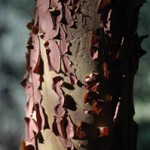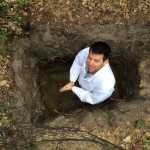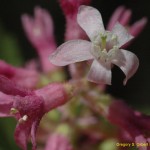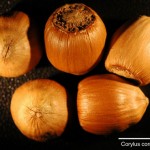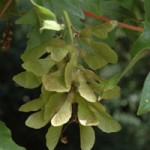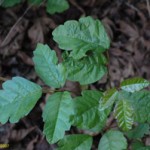The UCSC-FERP is a 16-ha mapped forest plot in Mediterranean-climate, mixed-evergreen coastal forest in the Santa Cruz mountains, along the Central Coast of California, USA. Established in 2007 on the Campus Natural Reserve of the University of California Santa Cruz campus, it is both part of an extensive area of protected forest habitat and just a short walk from the UCSC laboratories, classrooms, and residential colleges.
The FERP includes >51,000 tagged stems of >31,200 individuals woody trees, shrubs, and vines larger than 1 cm diameter, with 34 woody species from 30 genera and 18 families. Oaks, tanoaks, Douglas-fir, and redwoods together comprise 3/4 of all stems. Growth, mortality, and recruitment of new stems are measured on a 5-year cycle. A network of phenology traps and associated habitat boards provide long-term monitoring of tree flowering and fruiting and the dynamics of reptiles and amphibians.
The first three censuses of the FERP are described in Gilbert, G.S., S.G. Carvill, A.R. Krohn, and A.S. Jones. 2024. Three censuses of a mapped plot in coastal California mixed-evergreen and redwood forest. Forests 15(1), 164; https://doi.org/10.3390/f15010164.
The FERP provides exceptional opportunities for all UCSC students to learn the natural history of their campus and the tools of field-based ecological research – no prior experience is expected, and students of all backgrounds, interests, and majors are welcome. The underlying FERP monitoring data are all collected by UCSC student interns and assistants, and the FERP also serves as the site of numerous student research projects, fostering research and inquiry-based teaching about ecology and evolutionary biology in a changing world.
As is the entire UCSC campus, the FERP is sited on the unceded territory of the Awaswas-speaking Uypi Tribe. The Amah Mutsun Tribal Band, comprised of the descendants of indigenous people taken to missions Santa Cruz and San Juan Bautista during Spanish colonization of the Central Coast, is today working hard to restore traditional stewardship practices on these lands and heal from historical trauma.
We are excited to be part of the Smithsonian ForestGEO network, and follow their standardized protocols.
Click here to enjoy an introductory video to the FERP.
Internships
All UCSC students are eligible for 2-unit FERP internships through the Environmental Studies internship program. Internships require an average of 6 hours/week, with most spent in the forest. Contact our UCSC Campus Natural Reserve agency sponsor Reserve Manager Alex Jones for more information.
Research
We welcome and encourage responsible research on the UCSC-FERP that complements our long-term research goals. We strive to make our data freely accessible to researchers, and welcome observational and minimally manipulative studies in the forest. Please see our page on data policy and available data, and contact FERP Director and Environmental Studies Professor Gregory Gilbert (ggilbert@ucsc.edu) for more information.
FERP Data and Resources
We aim to make all FERP data readily available as soon as it is responsible to do so. We ask that you keep us informed of publications and that you cite us appropriately. See our Data page for available data, maps, and Data policy for how to recognize the hard work that went into creating the FERP.
The UCSC Forest Ecology Research Plot was made possible by National Science Foundation grants to Gregory S. Gilbert (DEB-0515520, DEB-084259, and DEB-1655896), by the Pepper-Giberson Chair Fund, the Robert Headley Presidential Chair for Integral Ecology and Environmental Justice, the UCSC Campus Natural Reserve, the University of California, the ForestGEO global network, and by the hard work of hundreds of UCSC students. We acknowledge that the land on which this research was conducted is the unceded territory of the Awaswas-speaking Uypi Tribe. The Amah Mutsun Tribal Band, comprised of the descendants of indigenous people taken to missions Santa Cruz and San Juan Bautista during Spanish colonization of the Central Coast, is today working hard to restore traditional stewardship practices on these lands and heal from historical trauma.




